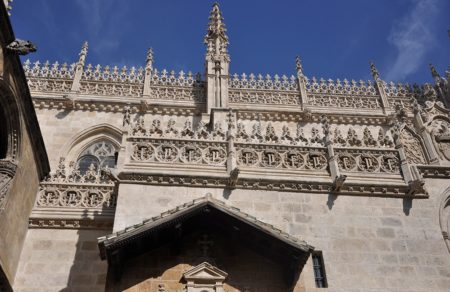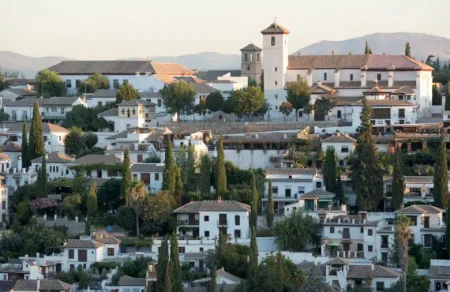When one thinks of the city of Granada in Spain, the first image that often comes to mind is the breathtaking Alhambra palace complex, with its intricate Moorish architecture and stunning gardens. However, tucked away in the heart of this historic city is another architectural masterpiece that demands attention: the Granada Cathedral, or as it’s known locally, “Catedral de Granada.” In this comprehensive post, we will explore the rich history, remarkable architecture, and cultural significance of the Granada Cathedral.
Índice de contenidos
- 1 A Testament to Time and Artistry
- 2 Historical Significance of the Granada Cathedral
- 3 Architectural Highlights of the Granada Cathedral
- 4 The Royal Chapel: A Marvel within a Marvel
- 5 The Royal Chapel’s Altarpiece
- 6 Cultural Significance and Tourist Attraction
- 7 Conclusion: A Living Testament to History and Faith
A Testament to Time and Artistry
The Granada Cathedral, dedicated to the Assumption of the Virgin Mary, stands as a testament to the enduring artistry of the Spanish Renaissance. Its construction began in the early 16th century, during the reign of Queen Isabella and King Ferdinand. The cathedral’s foundation stone was laid in 1518 by the Catholic Monarchs themselves. However, the Granada Cathedral is more than just a place of worship; it’s a symbol of Spain’s transformation from its Moorish past to its Christian present.
The architects and craftsmen who contributed to the cathedral’s construction poured their passion and expertise into every detail. This dedication to artistry is evident in the intricate carvings, delicate stained-glass windows, and the overall grandeur of the cathedral’s design. As you stand before its magnificent facade, you can’t help but be transported back in time, marvelling at the skill and vision of those who created this architectural wonder.
One cannot help but be awestruck by the cathedral’s grandeur. It is a prime example of Spanish Renaissance architecture.
Historical Significance of the Granada Cathedral
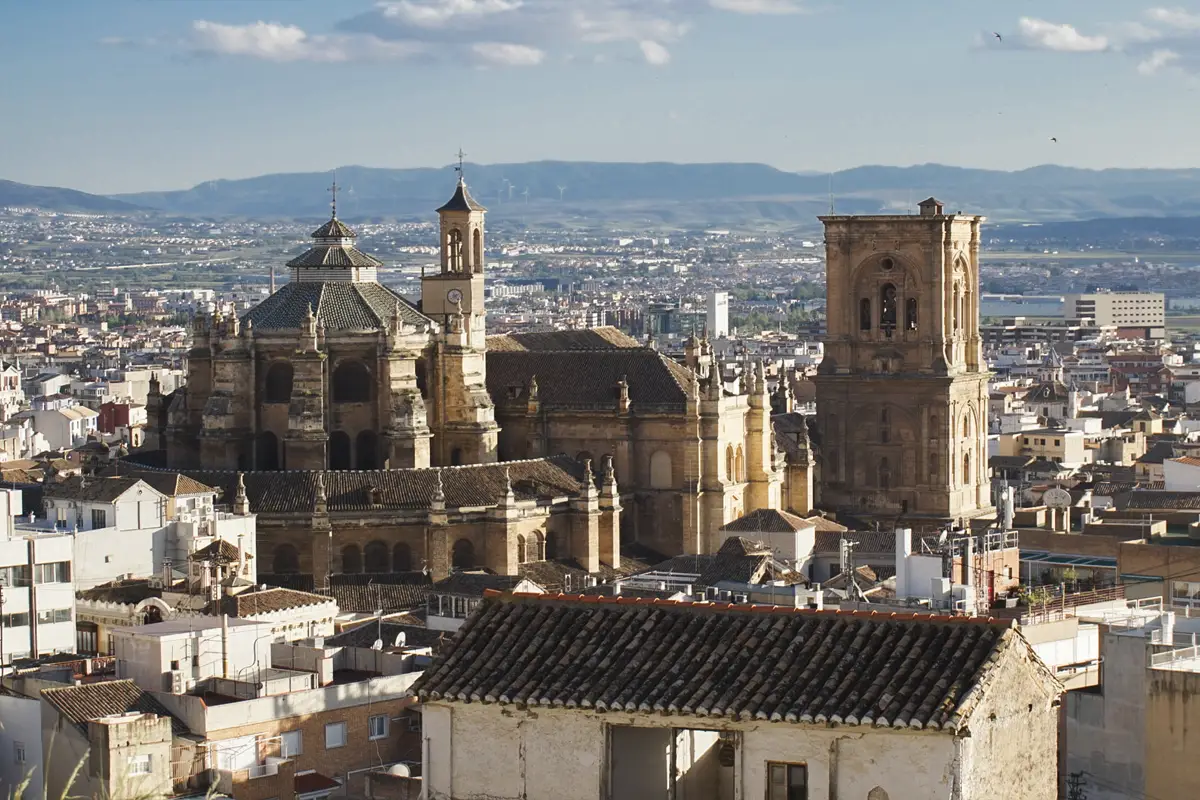
A Symbol of Christian Triumph
The construction of the Granada Cathedral marked the symbolic triumph of Christianity in Spain. It was built on the site of the city’s former central mosque, which was demolished to make way for the cathedral. This deliberate choice of location underscores the religious and political significance of the cathedral.
The cathedral’s construction was a statement of Spain’s commitment to the Catholic faith after the Reconquista, the period of Christian reconquest. It represented a new chapter in Spanish history, one where Christianity would dominate, and the cathedral itself would become a symbol of this religious and cultural shift.
Role of the Catholic Monarchs
The Catholic Monarchs were staunch supporters of Catholicism and played a crucial role in promoting the Christian faith in Spain. They were instrumental in the funding and construction of Granada Cathedral, which was seen as a symbol of their growing power and religious devotion.
Under their patronage, the cathedral became a centre for religious ceremonies and activities. It served as a place of worship for both the monarchy and the general public, reflecting the strong connection between the Spanish Crown and the Catholic Church. The presence of their ornate tombs in the Royal Chapel within the cathedral further emphasizes their enduring legacy.
Architectural Highlights of the Granada Cathedral
Striking Facade
The facade of the Granada Cathedral is a masterpiece in itself. The primary entrance, adorned with intricate sculptures and reliefs, is a magnificent example of the Spanish Renaissance style. The central figure on the facade is the Assumption of the Virgin Mary, which is the cathedral’s dedication.
As you stand before this grand entrance, take a moment to appreciate the attention to detail in the sculptures that depict biblical scenes and saints. The facade is not just a work of art; it’s a visual narrative of the Christian faith, and it sets the tone for the spiritual journey you’re about to embark upon within the cathedral’s walls.
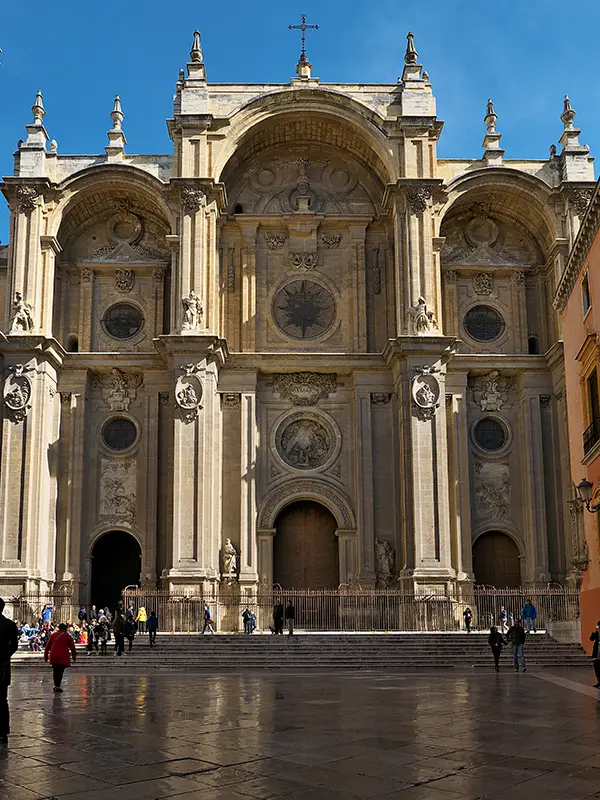
Upon entering the cathedral, visitors are greeted by a vast, awe-inspiring nave. The interior is a harmonious blend of Gothic and Renaissance elements. The nave is flanked by rows of towering columns, and the ceiling is a striking vaulted structure that adds to the sense of grandeur.
As you walk down the nave, look up to admire the intricate ribbed vaults that seem to reach for the heavens. The play of light and shadow on the stone surfaces creates a mesmerizing effect, adding to the cathedral’s sense of mystique and spirituality. It’s a space that invites quiet contemplation and reverence.
Capilla Mayor
The Capilla Mayor, or Main Chapel, is the focal point of the Granada Cathedral’s religious activities. It houses the cathedral’s main altar, which is adorned with a stunning crucifix and an intricately carved wooden choir.
Step into the Capilla Mayor and take a moment to appreciate the beauty of the altar. The crucifix at the center is a masterpiece of religious art, and the choir stalls are a testament to the craftsmanship of the woodworkers who created them. This space has witnessed countless religious ceremonies and represents the heart of the cathedral’s spiritual life.
The Royal Chapel: A Marvel within a Marvel
Within the precincts of the Granada Cathedral lies another architectural gem: the Royal Chapel, or “Capilla Real” in Spanish. This remarkable structure deserves special attention for its historical significance and stunning design.
It is located next to the Cathedral, but it has its own separate entrance and its own opening hours for public visits.
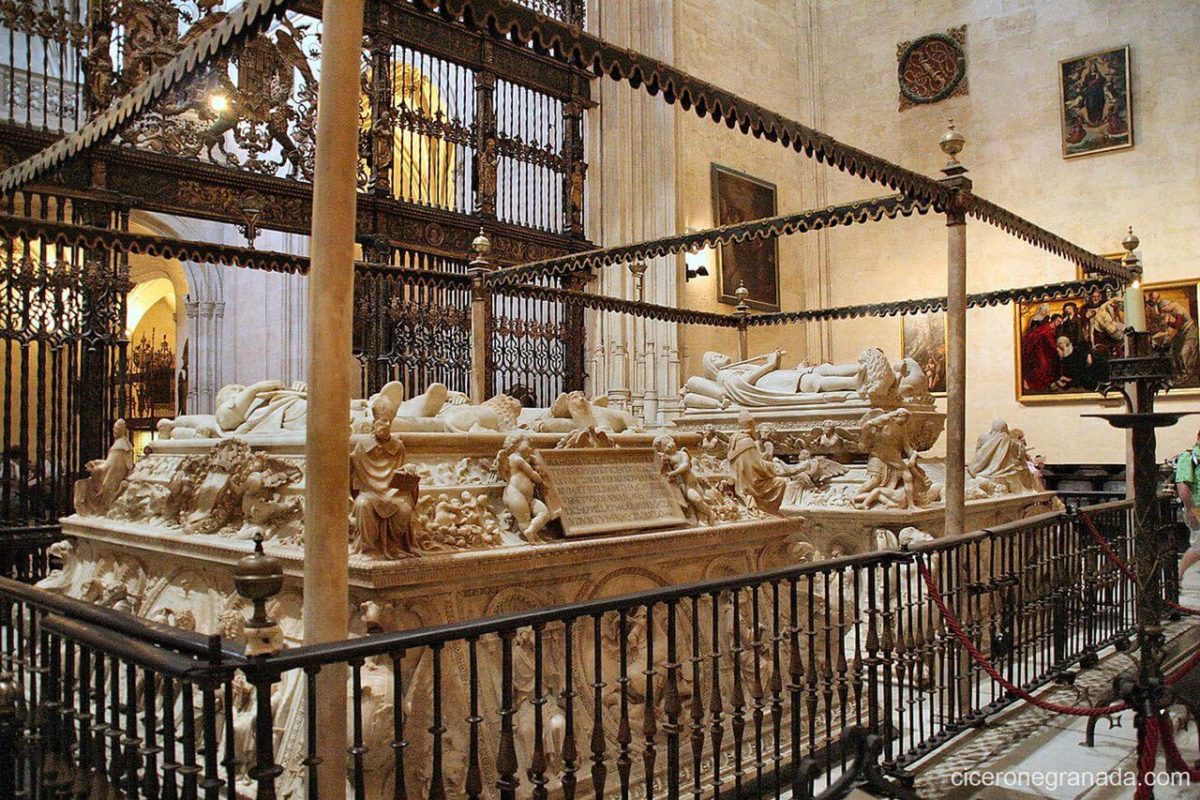
A Royal Resting Place
The Royal Chapel was built to serve as the final resting place for Spain’s Catholic Monarchs, Queen Isabella I of Castile and King Ferdinand II of Aragon. The chapel is a testament to the monarchy’s pivotal role in the unification of Spain and the consolidation of Catholicism as the dominant religion.
The tombs of Queen Isabella and King Ferdinand, along with those of their daughter Joanna of Castile and her husband Philip the Handsome, are elaborate and ornate. These royal tombs are a reflection of the monarchy’s enduring influence on Spain’s history and culture.
Gothic Majesty
The architecture of the Royal Chapel follows a predominantly Gothic style. Its interior is adorned with ornate altarpieces, beautiful stained-glass windows, and intricate woodwork. The soaring Gothic arches and ribbed vaults create a sense of grandeur and solemnity that befits the final resting place of royalty.
The chapel’s Gothic design is a stark contrast to the Renaissance and Baroque elements of the main cathedral, showcasing the diversity of architectural styles that coexist within this magnificent complex.
The Royal Chapel’s Altarpiece
The altarpiece of the Royal Chapel is an exquisite work of artistry. Crafted by sculptor Felipe Bigarny, it depicts scenes from the lives of Saint John the Baptist and Saint John the Evangelist. The altarpiece’s richly detailed sculptures and the gilded framework make it a focal point of the chapel.
Take a moment to study the intricate details of the altarpiece, from the delicate facial expressions of the saints to the intricate folds of their robes. It’s a testament to the skill and craftsmanship of the artisans who dedicated themselves to creating this masterpiece.
Cultural Significance and Tourist Attraction
A Living Heritage
The Granada Cathedral continues to be a living symbol of Spain’s rich cultural and religious heritage. It is a place of worship for locals and a significant tourist attraction, drawing visitors from around the world who come to admire its architecture and learn about its history.
The cathedral’s continued role as a place of worship ensures that it remains a vibrant and integral part of Granada’s cultural and religious life. Whether you’re a local attending a Sunday service or a tourist exploring its historical wonders, the cathedral’s doors are open to all who seek to experience its majesty.
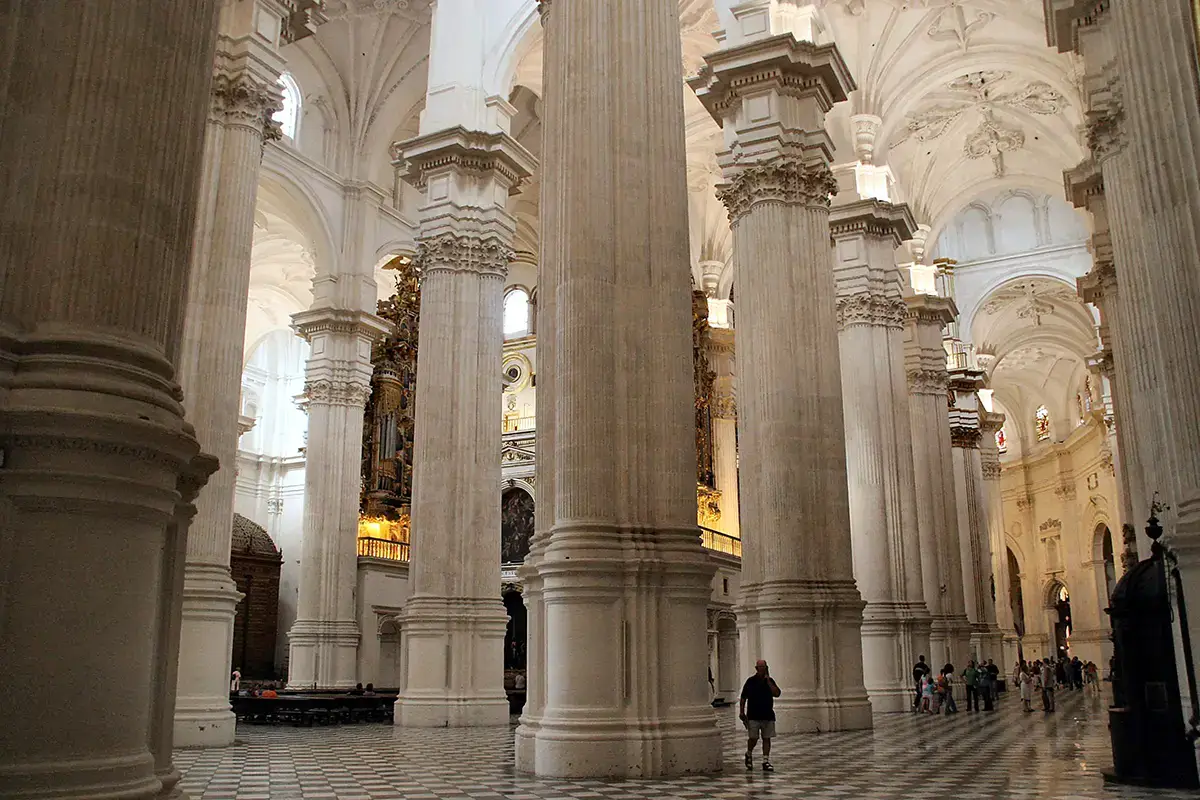
Vibrant Local Community
The cathedral is not just a historical monument; it is also an integral part of Granada’s vibrant community. It hosts various cultural events, concerts, and religious ceremonies throughout the year, making it a hub of activity and a reflection of the city’s cultural life.
Visitors to Granada have the opportunity to immerse themselves in the local culture by attending events held at the cathedral. From musical performances to religious processions, these experiences offer a glimpse into the rich traditions and celebrations of the city’s residents.
Tips for Visitors
Opening Hours and Tickets
The Granada Cathedral is generally open to visitors during regular hours. It is advisable to check the official website or visit the cathedral’s ticket office for the latest information on opening hours and ticket prices. Planning your visit in advance can help you make the most of your time at this historic site.
Guided Tours
To fully appreciate the cathedral’s history and architecture, consider taking a guided tour. Cicerone offers private tours in which our knowledgeable guides provide insights into the significance of various elements within the cathedral, allowing you to gain a deeper understanding of its cultural and historical importance.
Nearby Attractions
While visiting the Granada Cathedral, take the opportunity to explore other places in Granada, including the Alhambra, the Generalife gardens, and the historic Albaicín neighborhood. These sites offer a comprehensive view of Granada’s rich history and culture, and they complement your visit to the cathedral by providing a broader perspective of the city’s heritage.
Conclusion: A Living Testament to History and Faith
The Granada Cathedral stands as a remarkable testament to Spain’s complex and fascinating past. It is not only a place of worship but also a living legacy of the country’s cultural and religious heritage. When visiting Granada, a trip to the Granada Cathedral is not just a sightseeing experience; it’s a journey through time and an opportunity to marvel at the enduring beauty of Spanish architecture and culture.


